I built this patio table in 2016. The wood came from a mill on Coventry, where I bought a whole pile for around $100. The seller said it was Cypress, and I’ve had my doubts about that, because it is so lightweight. However, it has lived up to its reputation of resisting rot. Anyway, the top is made of two pieces and has breadboard ends. The base is all mortise and tenons. This week, someone must have bumped it pretty hard because the mortises gave out and I figured it would be good to document and share where it failed, as I consider how to salvage the top.
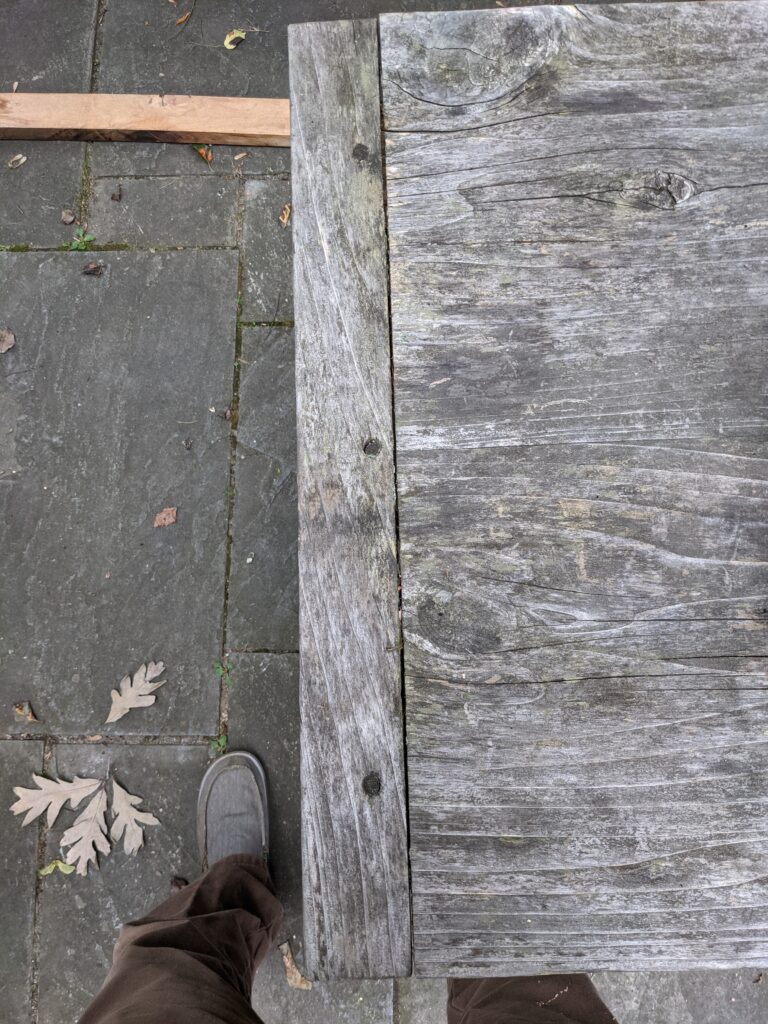
Breadboard Ends
The first thing to fail was the breadboard ends. The idea, drawboring is supposed to make the joint last longer. In my case, the wood grain split and broke off where the drawbore was attached. See mortise and tenon below. This wasn’t a critical failure and I have left the ends loosely attached for years.
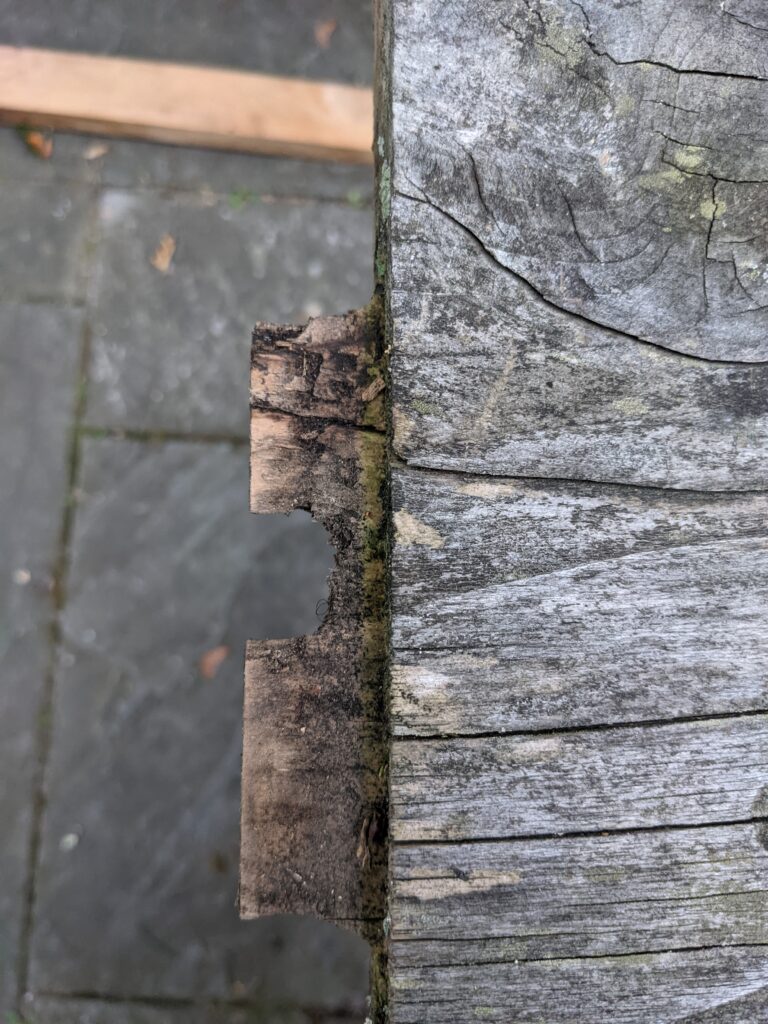
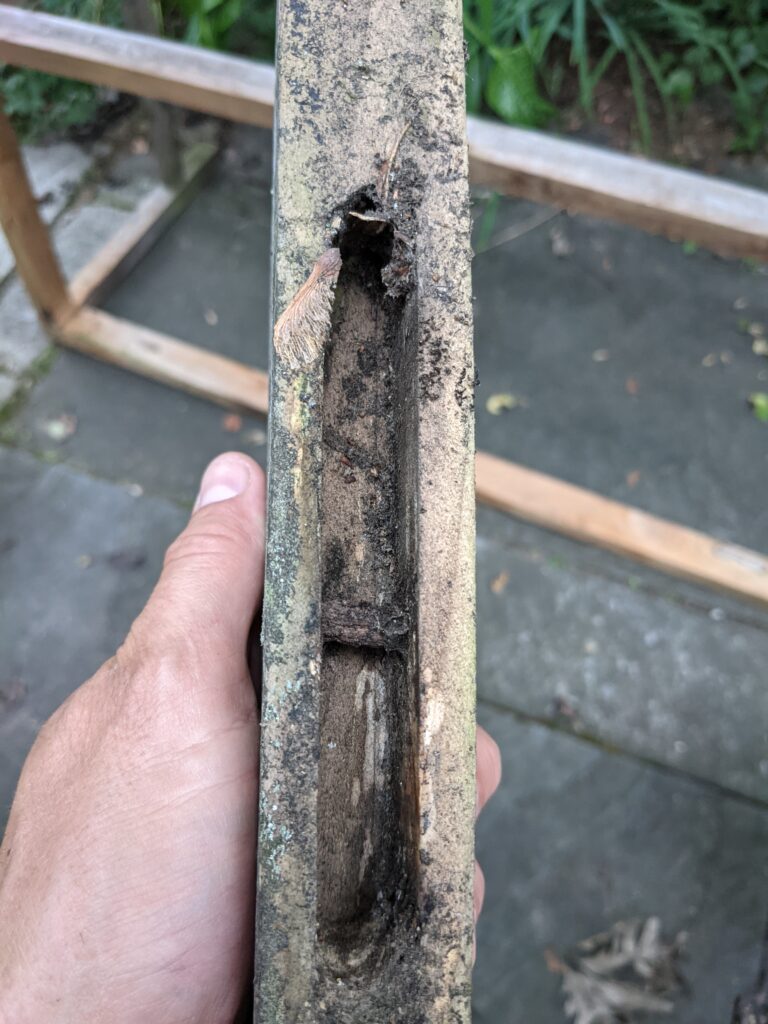
It’s All About that Base
As mentioned earlier, the base gave way and is useless now. In retrospect, it’s easy to see why it failed – the leg isn’t straight grained, so the mortise is only supported by the grain that ran the length of the mortise. Straight-grained wood would help and it would also have worked better with a stronger wood. The leg is 2″, square. The outside of the edge of the mortise is 1/2″ thick and the tenon is 1/2″ thick, leaving a 1″ square inside.
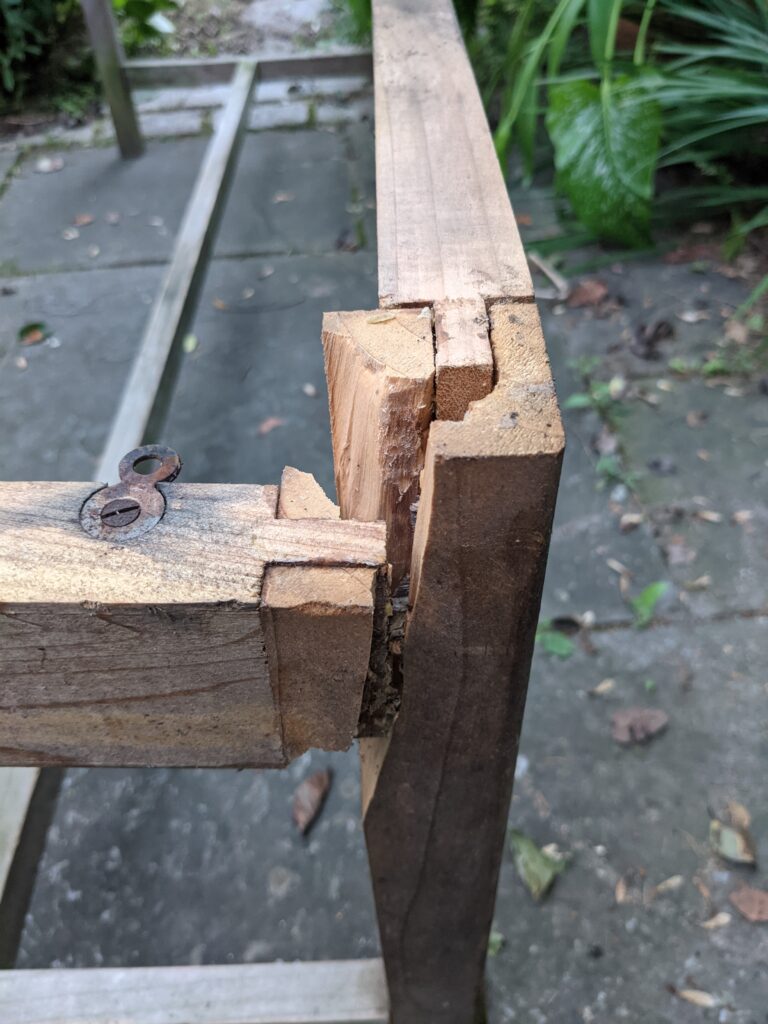
Final Thoughts
So, the table lasted five years. I can replace it altogether or build a new base. I’m leaning towards a new base, since the top is fine, but what wood should I use? Maybe some black locust. What construction technique? How thick are legs supposed to be? How long does a patio table last if it is build right?
How I Fixed It
Update 9/24/2021: The original base was flawed by design because the grain wasn’t running straight and the wood was weak (very light). 3″ legs seems a little awkward but, if they has a taper towards the foot, it could work but still; the added girth would only add minimal strength. The solution I chose was practical and promises durability – it’s called a trestle table. The 2 legs are attached to the top with figure 8 connectors (screws that allow for seasonal expansion). The stretcher and the through-wedge-tenon is a rigid solution that allows for easy break-down and stand-up if it is needed. Interesting to me that it should be simultaneously more durable and more aesthetically appropriate.
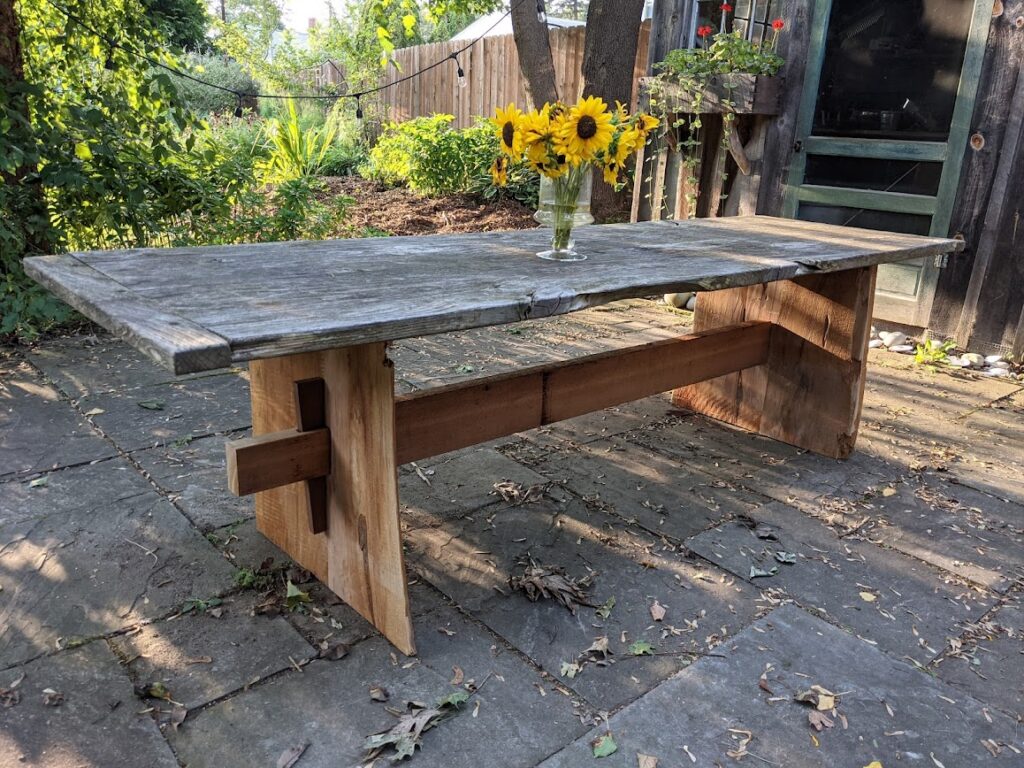
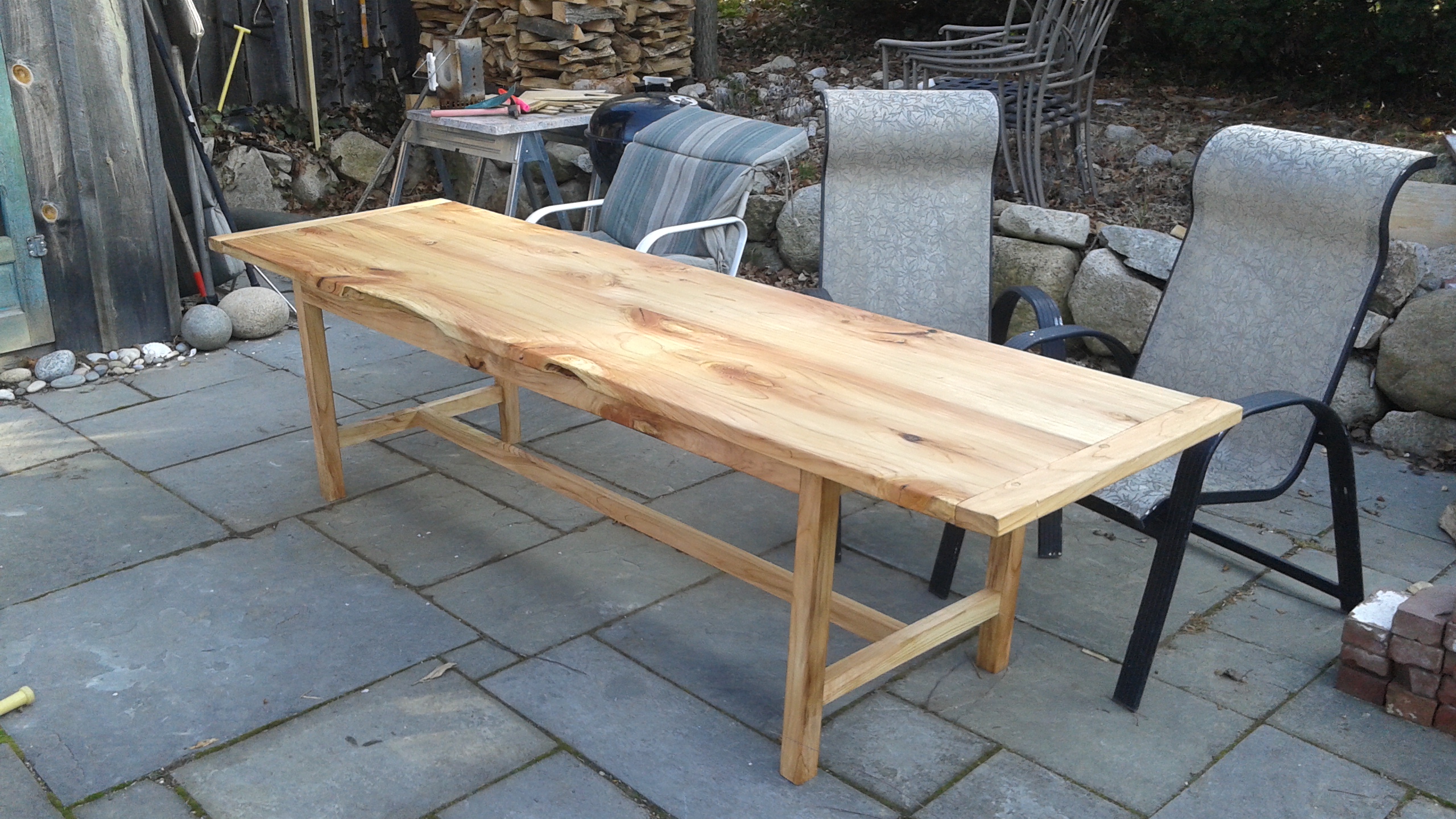
Leave a Reply